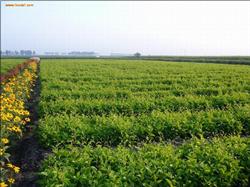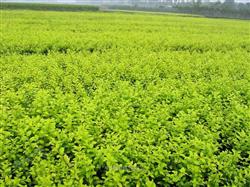Lycium barbarum has wide adaptability and easy to plant.

Lycium barbarum has strong sprouting power, and tillering seedlings grow from the roots while many new branches are sent out from April to August every year. Lycium barbarum is cold-tolerant, light-loving and saline-alkali tolerant. Its reproduction can be divided into sexual reproduction and asexual reproduction. Sexual reproduction will put the fruit into practical blisters for 2 days, soften and wash out the seeds to dry. Sow seeds in late March, cover 1 cm of soil, and spray water immediately after trampling. The seedlings emerged 7 days after planting, and the seedlings were transplanted in the spring of the following year. Asexual reproduction, cutting, ramet can be, fast reproduction, early fruit. It is common to raise seedlings by cutting. Lignified branches with an annual thickness of more than 0.3 cm are collected from fine mother trees, cut into cuttings of 18mur20 cm long, and obliquely inserted in the seedbed to keep moist, with a high survival rate, and can bloom in the second year. Transplanting is carried out in April and is easy to survive. It is suitable to be planted in calcareous loam with good drainage and avoid clay. During the growth period, bask in the sun and control watering. If it is too wet, the growth will be poor. During the flowering and fruiting period, it is necessary to ensure adequate moisture, and irrigate each time you pick a spray of fruit. Chinese wolfberry is prone to rust in summer, so Bordeaux solution should be used every 10 days in spring to control it. The fruit ripens one after another from June to November, so it should be harvested and dried or dried in time.
- Prev

Construction of fast-growing Lycium barbarum forest
Lycium barbarum has strong adaptability, can tolerate cold, drought and saline-alkali, and can grow in sandy loam, loam, loess and sandy wasteland. Chinese wolfberry likes cool climate, light and fat. Second, propagation method Lycium barbarum flowers solitary or several clusters in leaf axils, Corolla pink or mauve, with dark purple veins; pedicel thin.
- Next

Management techniques of cutting seedlings of Lycium barbarum
Lycium barbarum is a perennial deciduous shrub of Solanaceae, about 2 meters high, with angled and spiny branches; simple leaves alternate or clustered on short branches, lanceolate or rhombic, entire; flowers purplish red; berries, orange-red, ovate or long oval. Chinese wolfberry likes cold, cool and humid fertile soil, cold-resistant, drought-resistant, wind-resistant and rain-resistant, but not resistant to high temperature, in poverty.
Related
- Fuxing push coffee new agricultural production and marketing class: lack of small-scale processing plants
- Jujube rice field leisure farm deep ploughing Yilan for five years to create a space for organic food and play
- Nongyu Farm-A trial of organic papaya for brave women with advanced technology
- Four points for attention in the prevention and control of diseases and insect pests of edible fungi
- How to add nutrient solution to Edible Fungi
- Is there any good way to control edible fungus mites?
- Open Inoculation Technology of Edible Fungi
- Is there any clever way to use fertilizer for edible fungus in winter?
- What agents are used to kill the pathogens of edible fungi in the mushroom shed?
- Rapid drying of Edible Fungi

